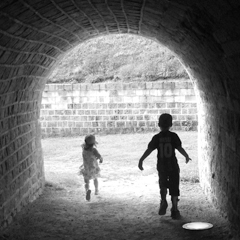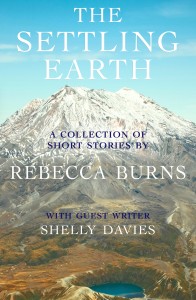How Newspapers Inspire Fiction Writers
 Historical documents can be treasure troves for fiction writers. We’ve all read stories based upon real historic events, or people, and no doubt some authors were inspired by historical manuscripts, either accessed in an archive, online, or in biographies. Letters, diaries, wills, government records – these are rich seams for writers to interrogate and use in their creative work.
Historical documents can be treasure troves for fiction writers. We’ve all read stories based upon real historic events, or people, and no doubt some authors were inspired by historical manuscripts, either accessed in an archive, online, or in biographies. Letters, diaries, wills, government records – these are rich seams for writers to interrogate and use in their creative work.
I’ve recently finished reading Astray by the Booker-shortlisted writer, Emma Donoghue, which imagines the lives of those mostly forgotten in history; Donoghue presents small yet not incidental moments in the lives of an array of characters, and refers, in explanatory notes for some stories, to related documents in the historical archive. It is easy to see why she was fascinated with these forgotten but mesmerising people in history.
In recent years, while writing a collection of short stories set in nineteenth-century New Zealand, I become intrigued by the stories contained within local newspapers. New Zealand was colonised by the British Empire from the mid nineteenth-century onwards, with local newspapers springing up almost as soon as the first houses were built.
The New Zealand Gazette first appeared in 1840 and was the country’s first newspaper, providing shipping and local news to the first emigrants. In later years, newspapers the Otago Daily Times relayed international news alongside more parochial matters – for example, news of Queen Victoria’s Golden Jubilee in June 1887 jostled for space alongside shipping and emigrant lists, advertisements for local dentists and wine importers, and colonial politics.
Newspapers can be hugely interesting to the writers of historical fiction. When writing my collection, I was extremely lucky to be able to draw on research undertaken for a PhD about ten years ago. Part of that research was to access the excellent Papers Past database (http://paperspast.natlib.govt.nz/cgi-bin/paperspast) , a searchable compendium of New Zealand newspapers. This database is a wonderful resource for the writer, providing a glimpse of day-to-day life in colonial New Zealand.
The harsh realities of life are contained in such local newspapers; for example, the Evening Post provides accounts of deserted wives, which was a fate more than a few women endured. On 29 May 1885, the Post reported that a tradesman had abandoned his wife and eleven children, eloping with a teenage girl – the paper gravely informed its readers that “the guilty pair are believed to have landed at Auckland, and justice is on the trail.”[1]
Other papers reported meetings held by temperance societies, which were organisations, mainly run by women, to combat the proliferation of alcoholism in the colony. In later years, temperance societies agitated for political reform and female suffrage; newspapers such as the Bruce Herald, the Colonist and the Bay of Plenty Times all contained reports of meetings where the issue of female suffrage was hotly debated (New Zealand went on to become the first country in the world to grant women the vote, in 1893).
 Historical accounts contained in archival newspapers can inspire writers, and one particularly harrowing piece of news led to a story in my collection. The real-life case behind the story is that of Minnie Dean, a woman who took in unwanted babies and was found to run a baby farm – a terrible Victorian description for households who profited by murdering unwanted children and disposing of their bodies. Several newspapers kept their readers up to date with the affair; the Poverty Bay Herald, the Thames Star and the Marlborough Express were among many to break the news about the discovery of bodies at the Dean’s house, the medical examinations, the trial, and the eventual execution of Mrs Dean.
Historical accounts contained in archival newspapers can inspire writers, and one particularly harrowing piece of news led to a story in my collection. The real-life case behind the story is that of Minnie Dean, a woman who took in unwanted babies and was found to run a baby farm – a terrible Victorian description for households who profited by murdering unwanted children and disposing of their bodies. Several newspapers kept their readers up to date with the affair; the Poverty Bay Herald, the Thames Star and the Marlborough Express were among many to break the news about the discovery of bodies at the Dean’s house, the medical examinations, the trial, and the eventual execution of Mrs Dean.
As horrific as these details are, historians and fiction writers alike are grateful to be able to read how the events were relayed to colonial readers. The Papers Past database, and access to other archives, has been an invaluable resource for this writer. Who knows what stories are yet to be rediscovered?
[1] Evening Post, 29 May 1885, page 2 [http://paperspast.natlib.govt.nz/cgi-bin/paperspast?a=d&cl=search&d=EP18850529.2.17&srpos=7&e=–1870—1890–100–1—-2deserted+wife–].
—
Rebecca Burns is an award-winning writer of short stories, over thirty of which have been published online or in print. She was nominated for a Pushcart Prize in 2011, winner of the Fowey Festival of Words and Music Short Story Competition in 2013 (and runner-up in 2014), and has been profiled as part of the University of Leicester’s “Grassroutes Project”—a project that showcases the 50 best transcultural writers in the county.
The Settling Earth is her second collection of short stories. Her debut collection, Catching the Barramundi, was published in 2012—also by Odyssey Books—and was longlisted for the Edge Hill Award in 2013.
Follow Rebecca on twitter: @Bekki66
Buy The Settling Earth HERE
Category: Contemporary Women Writers, On Writing

























To me, there is nothing better than planting myself at a microfilm reader (or even checking out the Google News Archive at home), for finding stories I can incorporate in my writing. Ads for everything from department stores to products of the day to movies playing at the time make my brain click into high gear. When I have a first draft done and want to begin adding those incredible historical details that make the novel leap off the page, this is my methodology.